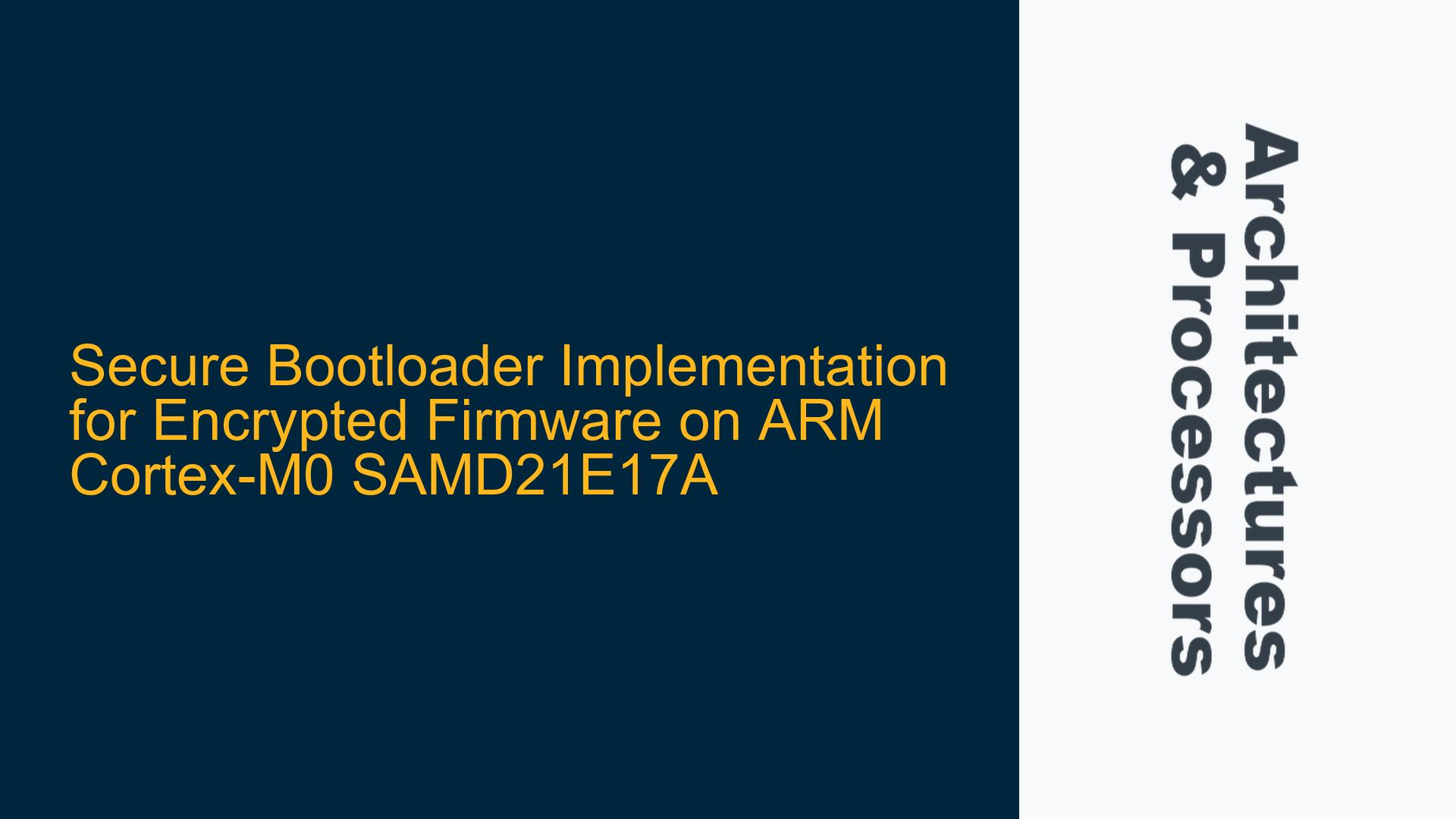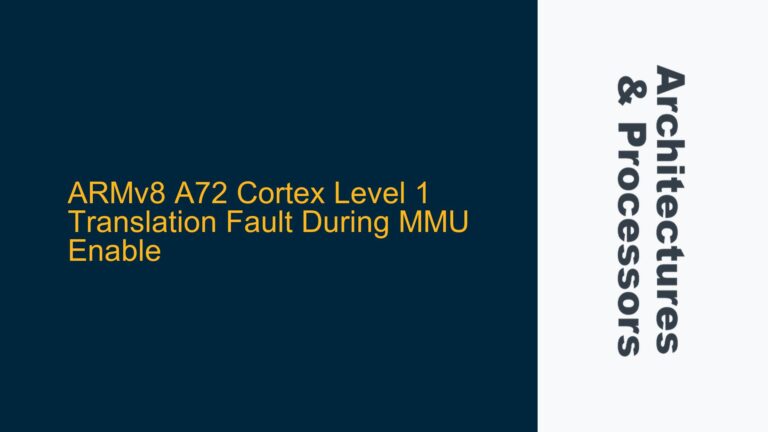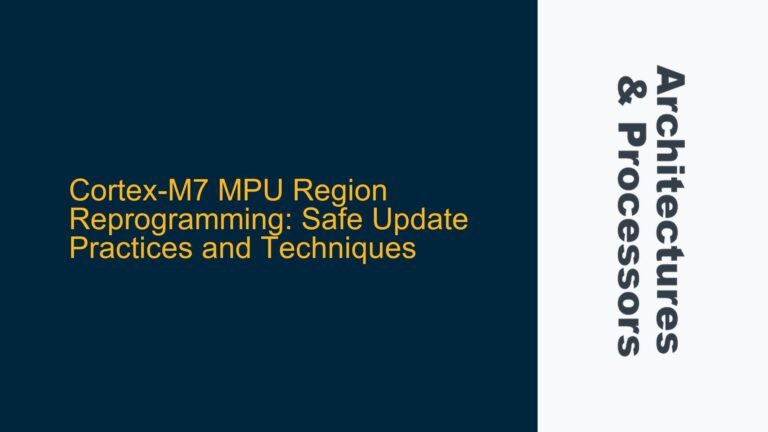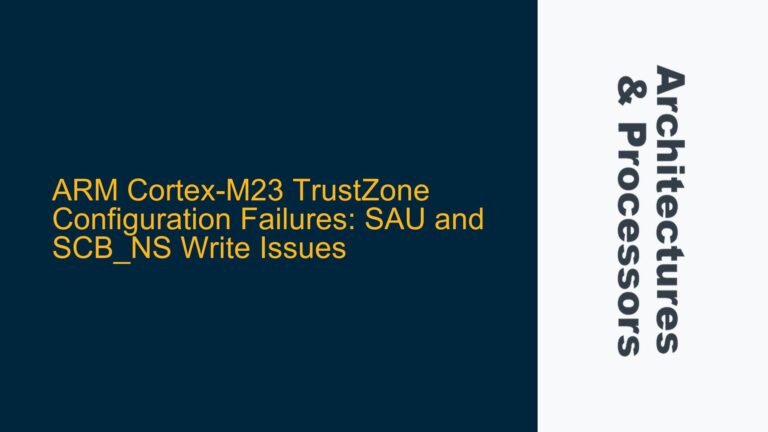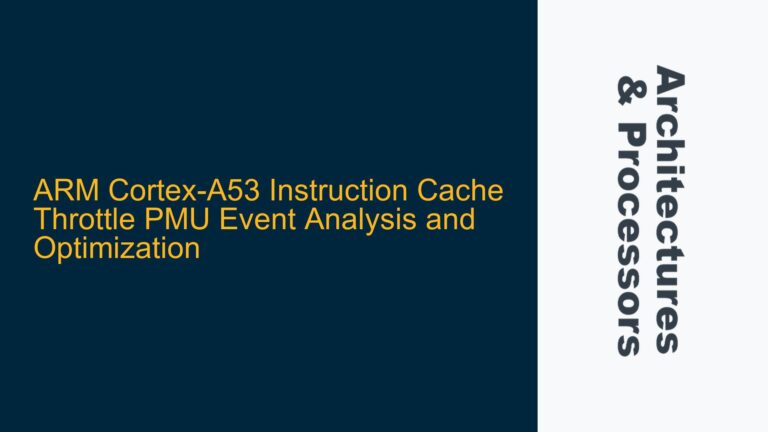Secure Bootloader Requirements and Challenges on SAMD21E17A
Implementing a secure bootloader for encrypted firmware on the ARM Cortex-M0 based SAMD21E17A microcontroller involves several critical considerations. The primary goal is to ensure that the firmware is encrypted and can only be decrypted and executed by the bootloader, thereby preventing unauthorized access and reverse engineering. The SAMD21E17A, part of the Atmel SMART ARM-based microcontroller family, lacks hardware-based cryptographic acceleration, which complicates the implementation of secure boot mechanisms. The Cortex-M0 core itself is also limited in computational power, making software-based cryptographic operations potentially slow and resource-intensive.
The secure bootloader must handle several tasks: decrypting the firmware, verifying its integrity, and ensuring that only authenticated firmware is executed. The encryption process typically involves using a symmetric key algorithm like AES-128, which is computationally intensive for the Cortex-M0. Additionally, the bootloader must manage the secure storage of cryptographic keys, which is challenging given the lack of a dedicated secure element in the SAMD21E17A. The bootloader must also ensure that the decrypted firmware is not exposed to potential attackers during the boot process.
One of the main challenges is the limited memory and processing power of the SAMD21E17A. The microcontroller has only 32 KB of Flash memory and 4 KB of SRAM, which constrains the size and complexity of both the bootloader and the encrypted firmware. The bootloader must be small enough to fit within the available Flash memory while still providing robust security features. Furthermore, the bootloader must be able to handle potential errors during the decryption and verification processes, such as corrupted firmware or incorrect cryptographic keys.
Another challenge is ensuring that the bootloader itself is secure and cannot be easily bypassed or modified. This requires implementing measures such as write protection for the bootloader code and using hardware features like the SAMD21E17A’s built-in NVM (Non-Volatile Memory) controller to enforce secure boot policies. The bootloader must also be able to detect and respond to tampering attempts, such as unauthorized firmware updates or attempts to read the cryptographic keys from memory.
Cryptographic Key Management and Firmware Encryption
The secure bootloader’s effectiveness heavily depends on the management of cryptographic keys and the encryption of the firmware. The SAMD21E17A does not have a dedicated hardware security module (HSM) or a secure enclave, so the cryptographic keys must be stored in a way that balances security and accessibility. One common approach is to store the keys in a protected section of the Flash memory, which can be configured to be read-only during normal operation. However, this approach is not foolproof, as an attacker with physical access to the device could potentially extract the keys using advanced techniques.
To mitigate this risk, the bootloader can use a combination of software-based key obfuscation and hardware-based protection mechanisms. For example, the keys can be split into multiple parts and stored in different memory locations, with the bootloader reconstructing the key during the decryption process. Additionally, the SAMD21E17A’s NVM controller can be used to enforce access restrictions on the memory regions containing the keys, preventing unauthorized reads or writes.
The firmware encryption process typically involves using a symmetric key algorithm like AES-128, which is widely supported and provides a good balance between security and performance. The firmware is encrypted offline using a toolchain that integrates with the development environment, and the encrypted firmware is then flashed to the device. The bootloader is responsible for decrypting the firmware using the stored cryptographic key and verifying its integrity before execution.
One important consideration is the choice of encryption mode. AES-128 in CBC (Cipher Block Chaining) mode is commonly used for firmware encryption, as it provides both confidentiality and integrity protection. However, CBC mode requires an initialization vector (IV), which must be securely stored or generated during the decryption process. The IV can be stored alongside the encrypted firmware, but care must be taken to ensure that it is not easily predictable or reusable, as this could weaken the security of the encryption.
The bootloader must also implement a mechanism for verifying the integrity of the decrypted firmware. This can be done using a cryptographic hash function like SHA-256, which generates a fixed-size hash value from the firmware data. The bootloader compares the computed hash value with a precomputed value stored in a secure location, such as a protected section of the Flash memory. If the hash values match, the firmware is considered authentic and can be executed; otherwise, the bootloader should abort the boot process and enter a secure recovery mode.
Implementing Secure Bootloader and Firmware Decryption
Implementing a secure bootloader for the SAMD21E17A involves several steps, starting with the design of the bootloader itself. The bootloader must be written in a way that minimizes its attack surface, with a focus on simplicity and robustness. The bootloader code should be stored in a protected section of the Flash memory, with write protection enabled to prevent unauthorized modifications. The bootloader should also include a mechanism for securely updating itself, such as a signed firmware update process that verifies the authenticity of the update before applying it.
The bootloader must be able to handle the decryption of the firmware using the stored cryptographic key. This involves reading the encrypted firmware from the Flash memory, decrypting it using the AES-128 algorithm, and verifying its integrity using a cryptographic hash function. The decrypted firmware is then loaded into the SRAM and executed. The bootloader must ensure that the decrypted firmware is not exposed to potential attackers during this process, which can be achieved by using memory protection mechanisms and clearing the SRAM after the firmware is executed.
One of the key challenges in implementing the bootloader is optimizing the performance of the cryptographic operations. The Cortex-M0 core is not designed for high-performance computing, and software-based AES-128 decryption can be slow and resource-intensive. To address this, the bootloader can use optimized cryptographic libraries that are specifically designed for low-power microcontrollers. These libraries often include assembly-level optimizations and take advantage of the Cortex-M0’s instruction set to improve performance.
The bootloader must also include a secure recovery mechanism in case of errors during the boot process. For example, if the firmware decryption or integrity verification fails, the bootloader should enter a secure recovery mode that allows the device to be reprogrammed with a valid firmware image. This recovery mode should be protected by additional security measures, such as requiring a specific sequence of actions or a secondary authentication mechanism to prevent unauthorized access.
Finally, the bootloader should be thoroughly tested to ensure that it meets the security and performance requirements. This includes testing for potential vulnerabilities, such as buffer overflows or timing attacks, and verifying that the bootloader can handle various error conditions, such as corrupted firmware or incorrect cryptographic keys. The bootloader should also be tested on the actual hardware to ensure that it performs as expected in real-world conditions.
In conclusion, implementing a secure bootloader for encrypted firmware on the SAMD21E17A microcontroller is a complex but achievable task. It requires careful consideration of the cryptographic key management, firmware encryption, and bootloader implementation, as well as thorough testing to ensure that the system is secure and reliable. By following best practices and leveraging the available hardware and software tools, it is possible to create a secure bootloader that protects the firmware from unauthorized access and reverse engineering.
